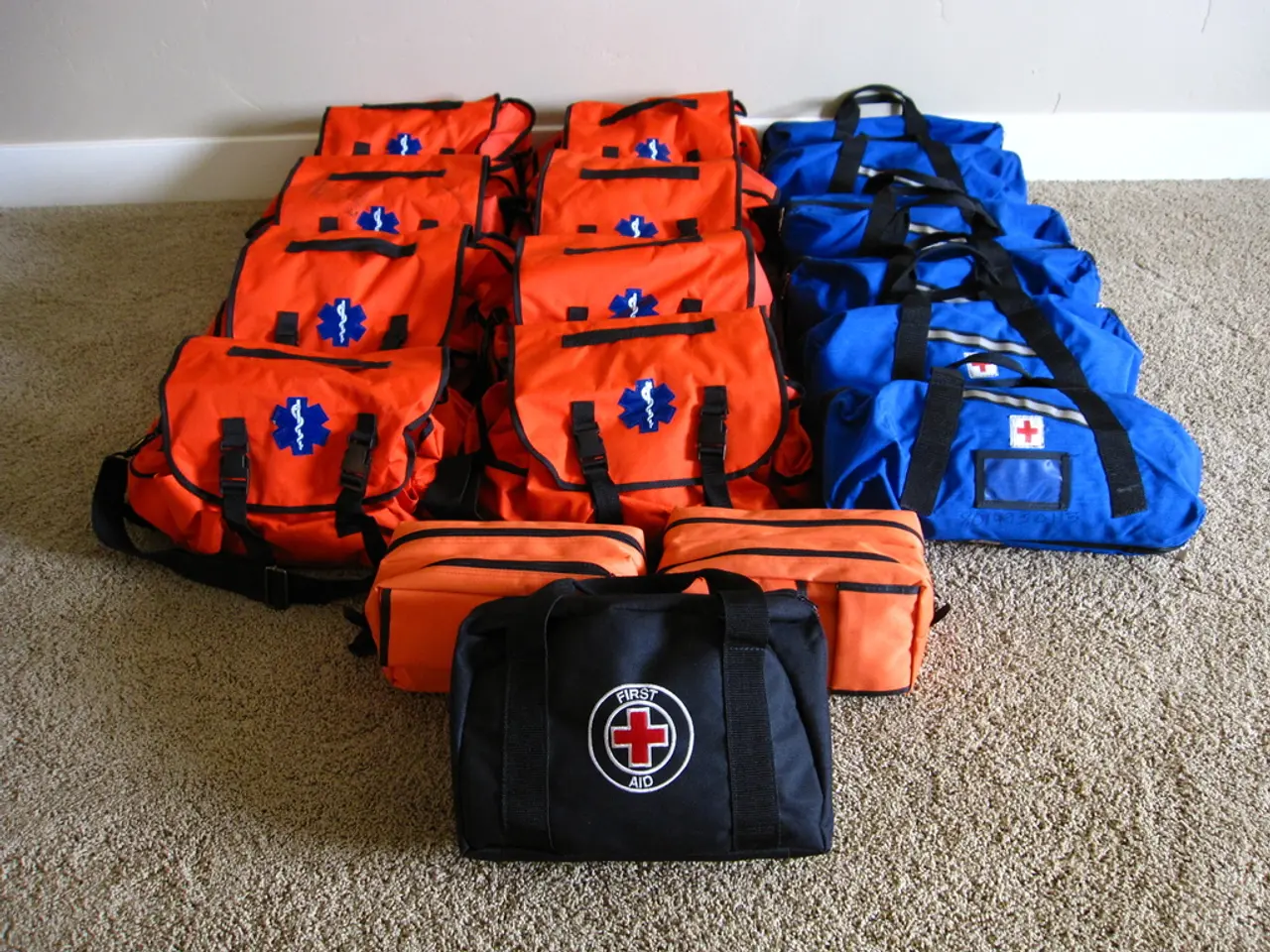Cancer Testing and Diagnostic Outcomes: Can a Blood Test Detect Cancer?
In the fight against cancer, a new frontier is emerging: blood tests. These innovative diagnostic tools, known as liquid biopsies and multi-cancer early detection (MCED) tests, are showing promising results in detecting various cancers at early stages, sometimes years before symptoms appear.
While no single blood test can accurately diagnose cancer, these new tests analyse tumour-derived genetic material or biological substances in the bloodstream, offering a non-invasive, early detection across multiple cancer types simultaneously.
One such test is the Johns Hopkins MCED blood test, which detects cancer by analysing plasma cell-free DNA shed by tumours, identifying cancer presence up to three years before clinical diagnosis. This early detection potentially allows intervention at much less advanced, more curable tumour stages.
Another notable test is a high-sensitivity biosensor blood test for colorectal cancer, achieving 99% accuracy in detecting cancer presence across stages I-IV. This method is cost-effective, fast, and suitable for point-of-care testing, making it a significant development in cancer diagnosis.
However, current blood tests generally require confirmation with follow-up diagnostic procedures due to potential false positives or ambiguous findings. Early-stage sensitivity and accuracy vary among tests; while some like the Johns Hopkins MCED and the biosensor for colorectal cancer show excellent promise, many DNA-based liquid biopsies have limitations in early detection sensitivity.
Research is shifting towards extracellular vesicles (tiny particles released by cells) as a more reliable biomarker than tumour DNA. Vesicle-based tests may improve early detection accuracy, though they are still under development and validation.
It is essential to remember that blood tests for cancer diagnosis are rapidly evolving and complement rather than replace conventional diagnostic methods such as imaging and biopsies to confirm and precisely locate cancer.
Regular self-exams can also aid in early detection. For instance, skin self-exams involve looking out for sores that are not healing, new, changing, or expanding spots, discolored patches, wart-like growths, moles that are new or changing in shape, size, or colour, and moles with irregular borders or a mix of colours.
People should complete self-exams regularly to establish a baseline for comparison. Similarly, performing regular breast self-exams can assist in diagnosing breast cancer early. If someone finds irregularities when performing a self-exam, they should bring it to a doctor's attention.
In case a blood test comes back showing markers for cancer, people can ask their doctor questions such as if it was a false positive, what tests they should have next, if they need only one test or multiple tests, and at what point they will know for sure whether it is cancerous.
Other tests doctors may use to diagnose cancer include imaging, tumour biopsies, laboratory tests, surgery, endoscopic examination, and physical examinations. If a testicular lump or irregularity is detected during a self-examination, it is crucial to seek medical attention promptly.
Early detection of cancer typically leads to the best outcomes. Clinical trials are validating tests like the CancerSEEK assay, Galleri test, and PanSeer assay that could potentially detect multiple types of cancer from a single blood draw.
In conclusion, the landscape of cancer diagnosis is changing, with blood tests showing great potential for early detection. However, it is essential to approach these tests with an understanding of their limitations and to rely on conventional diagnostic methods for confirmation and precise location of cancer.
- These innovative blood tests, such as the Johns Hopkins MCED blood test, identify cancer presence up to three years before clinical diagnosis, potentially allowing for early intervention.
- A high-sensitivity biosensor blood test for colorectal cancer achieves 99% accuracy in detecting cancer across stages I-IV, offering a cost-effective, fast, and suitable option for point-of-care testing.
- While current blood tests require confirmation with follow-up diagnostic procedures, research is shifting towards extracellular vesicles as a more reliable biomarker for early detection.
- Skin self-exams involve checking for sores that aren't healing, new or changing spots, discolored patches, wart-like growths, moles that are new or changing in shape, size, or color, and moles with irregular borders or a mix of colors.
- If someone finds irregularities during a self-exam, they should bring it to a doctor's attention for further investigation, as with finding a testicular lump or irregularity.
- Clinical trials are validating tests like the CancerSEEK assay, Galleri test, and PanSeer assay, which could potentially detect multiple types of cancer from a single blood draw.
- Regular self-exams, such as breast self-exams, can assist in diagnosing cancer early, but should be complemented with conventional diagnostic methods for confirmation and precise location of the cancer.




